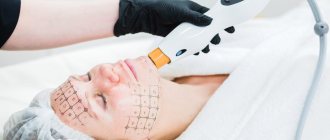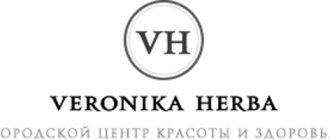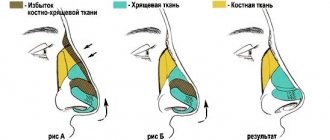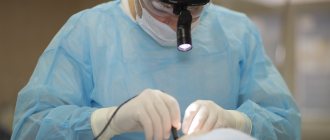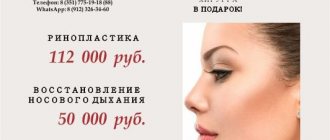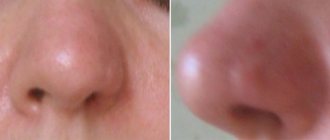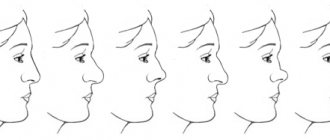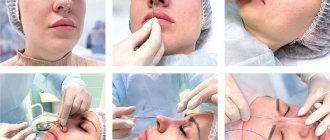Rhinoplasty is a plastic surgery whose purpose is to correct congenital or acquired visual defects of the nose and restore proper nasal breathing. In this operation, irregular nose shapes are corrected by replacing or removing certain fragments.
There are two problems that this operation solves:
1. Giving the patient’s nose a certain shape and size;
2. Normalization of nasal breathing function by correcting the airways.
The initiative to change the features of the nose most often belongs to the patient who is not satisfied with it. And if the beauty of the nose is an ambiguous concept, then normalizing breathing brings a tangible positive effect.
Surgery is recommended if you have:
- increased length of the nose;
- hooked nose tip;
- excessively thick or thin end of the nose;
- the wings of the nose are too wide;
- traumatic or congenital curvature of the nose;
- deviated nasal septum;
- nasal breathing is completely or partially impaired.
If we are not talking about recovery from injury, then we recommend performing rhinoplasty after 20 years, when the final skeleton of the nose is formed. After 40 years, it is undesirable to perform surgery due to the slower regeneration of cartilage tissue. In addition to age restrictions, there are the following contraindications:
- diabetes;
- kidney and liver disease;
- diseases of the cardiovascular system (hypertension, coronary disease, etc.);
- inflammatory diseases and acute viral infections;
- mental disorders;
- oncological diseases;
- blood clotting disorder.
Advantages
The use of a laser is less traumatic and allows for intervention “without blood.” The beam seals the vessels and prevents the development of bleeding.
Visually, this reduces the risk of hematomas and affects the rehabilitation period. The body recovers faster than during operations with a scalpel.
Lack of contact with the instrument provides an antiseptic effect. The incisions that the surgeon makes during the operation have smooth edges and heal much faster.
Under the influence of the beam, the cartilage structures soften. This facilitates further work on the shape of the nose . The laser beam stimulates cellular regeneration.
The patient is discharged home 2–3 hours after the intervention. Long-term hospitalization is not required.
Rhinoplasty: before surgery
During your consultation, our surgeon will conduct a comprehensive examination of your nose and discuss with you possible options for the operation and its expected results. It is better if you can clearly formulate your wishes regarding the upcoming operation.
- Be sure to inform your doctor about your chronic diseases, if any, and whether you have allergies or intolerance to any medications.
- To successfully perform this plastic surgery, it is very important for the surgeon to know whether you have had nasal injuries and plastic surgery before.
- You may first need to conduct an X-ray and computed tomography scan of the sinuses.
- When it is necessary to correct the shape and size of the nose and correct respiratory function, then an otolaryngologist (ENT doctor) takes part in the preparation and implementation of the rhinoplasty itself together with a plastic surgeon.
Traveling after surgery
Rhinoplasty in the summer doesn't mean you can't go on vacation. Air travel is generally safe a few days after the procedure or after the incisions have healed. It is also good to travel by car. If you are driving alone, it is best to wait until any pain medications that may cause drowsiness wear off.
Nasal sprays can be used during a flight to relieve discomfort caused by changes in airplane air pressure. Saline spray can also keep your nasal passages from drying out during a flight. Ask your doctor if chewing gum during a flight will help relieve nausea.
Recovery after rhinoplasty
The operation and postoperative period are quite painful, so the surgeon will prescribe you painkillers and sleeping pills. Swelling of the eyelids and changes in their color can last 10-12 days. The upper lip may become numb for some time. Sutures are usually removed after 7-8 days. During the first 2-3 days after surgery, nasal breathing may be impaired due to swelling. You will be able to engage in active sports no earlier than 10-12 weeks after rhinoplasty.
The result of rhinoplasty is fully visible after 6 months, and in some cases even after 12 months. When correcting the tip of the nose, the operation is much easier to tolerate, and the results are visible much earlier.
Rhinoplasty is a serious plastic surgery, but the possible temporary inconveniences cannot compare with the pleasure you will experience from your new look and restored health.
Rhinoplasty in questions and answers
People who are completely satisfied with their appearance and their reflection in the mirror are extremely rare. If we talk about the face, then the leader in the number of discontent is the nose. For example, the following options required surgical intervention:
We know that the size and shape of the nose are genetically determined and, in most cases, the nose on the face looks quite harmonious. Small deviations in its size or shape: a hump, a thick tip of the nose, a nose that is too long, can cause a person to feel insecure and lead to the development of complexes. Such patients are indicated for aesthetic rhinoplasty.
But there are situations when rhinoplasty is a justifiable necessity. We are talking about patients with respiratory dysfunction; in this case, rhinoplasty has medical indications.
Rhinoplasty is considered a rather complicated operation, especially for the patient, since the recovery process after surgery is quite long and the result can only be assessed after a year. But the result speaks for itself:
Despite its complexity, rhinoplasty is gaining increasing popularity and interest from patients every year.
To explain the essence of rhinoplasty and answer questions of interest, we asked the head of the “Center for Aesthetic Rhinosurgery”, laureate of the National Award “Best Plastic Surgeon in Rhinoplasty” from Tecrussia.ru, Vladislav Semenovich Grigoryants.
— Hello Vladislav Semenovich.
Please tell me how a patient can avoid making a mistake when choosing a surgeon? What should you pay attention to when choosing a specialist?
We mainly look at the work of the surgeon. Photos before and after rhinoplasty speak about the level of the surgeon. Plus patient reviews.
— What is rhinoplasty?
Rhinoplasty is a plastic surgery aimed at changing the shape of the nose: reducing the size, correcting the back and tip of the nose, etc.
Rhinoplasty is, on the one hand, a rather complicated operation, on the other hand, if a surgeon specializes in this and is well versed in this, then for him rhinoplasty is a fairly easy operation.
— At what age can rhinoplasty be done?
Girls can undergo this operation from the age of 14, boys from 16. It is at this age that the formation of the bony skeleton of the nose ends.
— What should be the medical indications for rhinoplasty?
Rhinoplasty, in most cases, is an aesthetic operation. An exception is septoplasty, i.e. correction of the nasal septum. A deviated nasal septum can make nasal breathing difficult; in this case, the indication for surgery is its curvature. There are no other medical indications for rhinoplasty.
In addition, a deviated nasal septum, to one degree or another, is observed in 95% of people, but not everyone experiences breathing problems.
Therefore, when performing rhinoplasty, 95% of the time I perform septoplasty, regardless of whether the patient has breathing problems or not. If I don’t do this, then later, in the postoperative period, the septum will lead the nose away.
— How is a consultation regarding rhinoplasty carried out?
Basically, this is a simulation that allows the patient to understand what can be done in his particular case. And answers to questions: these could be organizational issues or questions regarding the course of the postoperative period.
— Do you do computer modeling of the nose during a consultation?
Yes, definitely. I do it during primary operations.
— What time of year is it better to have rhinoplasty?
There is no seasonality. Rhinoplasty can be done at any time of the year.
— What medications should be avoided before rhinoplasty?
Aspirin-containing. They thin the blood, so there will be heavy bleeding during surgery. This causes inconvenience for the surgeon, plus the formation of good bruises and bruises after surgery.
— How best to prepare for rhinoplasty?
No special preparation is needed. The only thing is not to do peelings a month before the operation and pass all the necessary tests.
— What is the essence of the operation?
Change the shape of your nose.
— What type of anesthesia is used during rhinoplasty?
During rhinoplasty, general endotrachial anesthesia is used. People ask a lot about intravenous or mask anesthesia. Regarding mask anesthesia, no, firstly, by putting a mask on the nose, we will not be able to gain access to the nose, and secondly, mask anesthesia has not been used for a long time.
— What types of rhinoplasty exist?
There are two types of rhinoplasty - open and closed rhinoplasty. The choice of rhinoplasty technique is based on the surgeon’s preferences.
I mostly perform all repeated surgeries using the open method. In 99% of cases, I perform primary rhinoplasty using the closed method.
— How long does rhinoplasty last?
Primary rhinoplasty surgery lasts an average of 1.5 hours
— How does the thickness of the skin of the nose affect the outcome of rhinoplasty?
Thin skin gives good contouring and definition of the nose. In patients with thin skin, swelling subsides much faster. With thick skin, swelling lasts a very long time, up to a year or more, plus it is impossible to get a defined nose. Thick skin of the nose will hide all the changes that we will make on the osteochondral skeleton of the nose.
— Is a hospital stay necessary after rhinoplasty?
It is necessary to spend 24 hours in the hospital after the operation.
-How often do you need to come for dressings?
During the first 10 days, the patient comes to me every other day. The nasal splint is kept in place for 10 days, respectively, until the day the nasal splint is removed, dressings occur every other day.
— What does a patient need to know about the rehabilitation process?
Since, basically, rhinoplasty is performed with the bone skeleton affected, an osteotomy is performed, in any case, the rehabilitation period is accompanied by the formation of bruises.
If there are no bruises after rhinoplasty, this indicates that the surgeon did not perform an osteotomy. These are our patients for re-operation.
— How is the rehabilitation period after rhinoplasty?
The operation is easily tolerated. The course of the postoperative period is not severe, the patient can easily take care of himself, without additional help.
— Is the pain severe and pronounced in the postoperative period?
The operation is painless. The head may ache a little, but the nose, as a rule, does not hurt.
— What are the recommendations for the postoperative period?
Treat the inside of the nose with hydrogen peroxide, and use saline drops or spray to relieve swelling of the nasal mucosa.
-What are the contraindications during the rehabilitation period after rhinoplasty?
You can't play sports. During the period when the patient is in a cast, you should not wash your hair by throwing it back. Alcohol is not advisable as it causes edema.
— Is it possible to drive immediately after rhinoplasty?
It is not advisable to drive immediately after surgery. After anesthesia, there may be some lethargy, so for the first two or three days it is better to have someone come for you.
How long does it take to recover from rhinoplasty?
It takes two weeks for the bruises to go away. After the bruises disappear, the patient can return to his normal lifestyle and go out in public.
— Do stitch marks remain after rhinoplasty?
If it is a closed rhinoplasty, then no marks are visible. After open rhinoplasty, a barely noticeable suture remains on the columella.
— When will it be possible to see the final result of the operation?
The final result after the operation can be seen within a year.
— Is it possible to reduce the tip of the nose without surgery?
No, it is not possible without surgery.
— What are the risks or complications after rhinoplasty?
There are no complications as such. There may be a small hematoma, which is easily treated.
— Is it possible to have rhinoplasty during menstruation?
?
In principle it is possible. I operate during my period, and it does not cause me any difficulties.
— Is it possible to have a nose job while breastfeeding?
Since rhinoplasty is performed under general anesthesia, all drugs used during anesthesia can pass into the milk. This is highly undesirable for a child. Rhinoplasty can be performed one month after the end of lactation.
Patient Questions
- Hello. I am planning to have rhinoplasty, I have a deviated septum. How many days of vacation should I take for rehabilitation after surgery?
Need to take 2 weeks. Two weeks will be enough for the bruises to disappear.
— Hello! My son is 14 years old and has had a deviated nasal septum since birth. One nostril is not breathing at all. Is it possible to have surgery at this age?
No, only after 16-17 years, since at the age of 14 in boys the bone skeleton of the nose is not yet fully formed.
- Hello! I have a very small nose, is it possible to gently enlarge it? What will this operation be called?
Also rhinoplasty, using techniques that are aimed at solving this problem, i.e. nose enlargement
There are many methods. To choose a specific technique, consultation with the patient is necessary. After consultation, examination and the necessary measurements, it becomes clear whether grafts will be necessary, or whether a good result can be achieved by distributing tissues and narrowing the nasal bridge, which allows increasing the projection of the nose
- Hello. Is it dangerous to have rhinoplasty if you have had eye surgery?
No, absolutely.
— Hello, I would like to hear your opinion about non-surgical rhinoplasty?
There is no non-surgical rhinoplasty. It is possible to use fillers to slightly correct changes. It is not possible to reduce or change the shape of the nose without surgery.
- Good afternoon! Is it possible to have rhinoplasty for chronic rhinitis?
Can. But rhinitis will not go away after rhinoplasty.
— Is it possible to make nasal breathing easier during rhinoplasty?
Yes, definitely. After rhinoplasty, in most cases, nasal breathing improves.
— Hello, I suffer from rosacea, I have a lot of capillaries on my nose. Does it make sense for me to remove them before rhinoplasty or can this be done later?
Doesn't matter. You can deal with the problem of rosacea both before and after surgery.
- Good afternoon! I have a neat nose, but there is a small hump. When I smile, my nose seems to peck. What can be done in my case and how much will it cost?
You are recommended for complete rhinoplasty. The cost of such an operation is 230,000 rubles.
— Hello, I’m 40 years old. Is it possible to have rhinoplasty if I am undergoing hormone replacement therapy?
Hormone therapy is not a contraindication for rhinoplasty.
- Good afternoon!
Please explain why secondary rhinoplasty costs more than primary rhinoplasty. If I had rhinoplasty 15 years ago, will the operation now be considered secondary?
Yes, of course, the operation will be considered secondary, since there has already been an intervention in the nasal cavity and it is not known what was done to the nose before that. It is not always possible to understand what you may encounter during a repeat operation. Correcting is always more difficult than doing primary rhinoplasty. Therefore, the price for secondary rhinoplasty is higher.
- Hello! 10 days after the operation, my daughter had her head removed from her nose. There was no pain, breathing was not impaired, nothing visually shifted. Could this affect the final result of the operation?
Must watch. Judging by the description, everything is in order, but a personal inspection is needed. Contact your operating surgeon.
— Hello, is it possible to reduce the distance between the nose and upper lip using rhinoplasty?
Can. Here we are talking about the pecking tip of the nose. When the tip of the nose is raised, the distance between the nose and the upper lip visually increases.
— I have a mild form of asthma. Is it possible for me to have rhinoplasty?
In all likelihood yes. But, you need to communicate with an anesthesiologist to understand what risks exist with anesthesia. Permission to operate in the case of asthma is given by the anesthesiologist, and he has the final say. Anesthesia selection will be necessary.
- Hello! I have hepatitis C. Do you perform surgeries for this diagnosis?
For hepatitis yes, for HIV no.
- Hello. A year ago I broke my nose bone. I had surgery to correct the bone misalignment. How long before I can have rhinoplasty to change the shape of my nose, from an aesthetic point of view?
In a year.
— Hello, I have a slight post-traumatic displacement of the bone and cartilaginous structures of the nose. How much will the correction cost?
Correction will cost 230,000
- Good afternoon! I am 50 years old. As a result of a work injury, 2 weeks ago, she received a displaced fracture of her nose. The nose has become crooked, the bone seems to be sinking. How long does it take to have rhinoplasty to correct a defect?
Rhinoplasty can be done after a year, since it is necessary for all bone tissue to grow together; reposition is done within 10 days after the injury.
Author of the article:
Grigoryants Vladislav Semenovich
Member of the Russian Society of Plastic, Reconstructive and Aesthetic Surgeons. Member of the European Rhinoplasty Society.
- Telephone
- Website: www.doctorrigrig.ru
How is laser rhinoplasty performed?
Before starting, anesthetic administration is performed. This is usually local anesthesia. If extensive surgery is planned, general analgesia is used.
The surgeon makes the incision using a laser beam. He carries out all manipulations through a small access. Superficial surgery is performed without cutting the skin.
The whole procedure takes from 10 minutes to half an hour.
After completion, apply a rigid bandage and place a turunda into the lumen of the nasal passages.
If the operation was small, you can spend the recovery period at home. For extensive interventions, inpatient treatment is recommended. For this purpose, the patient will be placed in a ward for several days. He is monitored, tests are carried out and dressings are performed.
After the end of the early rehabilitation period, the doctor decides on discharge.
Consultation with a doctor before the procedure
A visit to an otolaryngologist allows you to identify problems and discuss treatment options. If there are contraindications, the specialist will advise the procedure.
The doctor conducts a detailed examination. Next, he discusses all stages of treatment with the patient.
Before the intervention, you need to undergo a number of examinations:
- General blood analysis;
- Coagulogram;
- X-ray of the nose in two projections;
- ECG.
The list will be supplemented according to individual indications.
Who is suitable for laser plastic surgery?
Indications:
- Irregular septum shape;
- Visual defects;
- Problems after injuries.
The operation is prescribed after consultation with an ENT doctor.
Attention should be paid to the age category of patients. The optimal period for laser nose correction is considered to be 20–45 years. This is due to the body's regenerative ability. For patients whose age is over 45 years, rehabilitation has a longer period.
Rhinoplasty for young patients under 18 years of age is performed only for strict medical reasons. Consent to the manipulation is signed by guardians or parents.
Where is the best place to have septum plastic surgery?
In public clinics, correction of the nasal septum is carried out using the Killian method. It is worth mentioning that this is an outdated technique, it is quite traumatic.
In recent decades, many modern minimally invasive techniques have appeared that can reduce the rehabilitation period:
- endoscopic septoplasty;
- laser
All these types of interventions are not carried out under the compulsory medical insurance policy.
It is up to the patient to decide which clinic to go to, paid or free. Money is on one side of the scale, health is on the other. Of course, if there are no financial possibilities, then there is no choice, but if there is money, then it is better to do the operation for a fee. Plastic clinics that do not operate under compulsory medical insurance have the latest equipment, which can be used to perform interventions with the least amount of tissue damage.
If you decide to save money, you need to do the following:
- Visit an ENT specialist.
- Get tested.
- Receive a referral on Form 057 for surgery.
Article on the topic: Which clinic can you go to under the compulsory medical insurance policy?
What type of anesthesia to choose, local or general, is decided by the surgeon.
Note! You can get septoplasty under compulsory medical insurance at the National Medical Research Center of Otorhinolaryngology "FSBI NMITSO FMBA of Russia", at the Institute of Otorhinolaryngology named after. L. I. Sverzhevsky.
In general, we would like to note that free does not mean bad. The main thing is to choose a qualified surgeon, then the operation will be successful.
